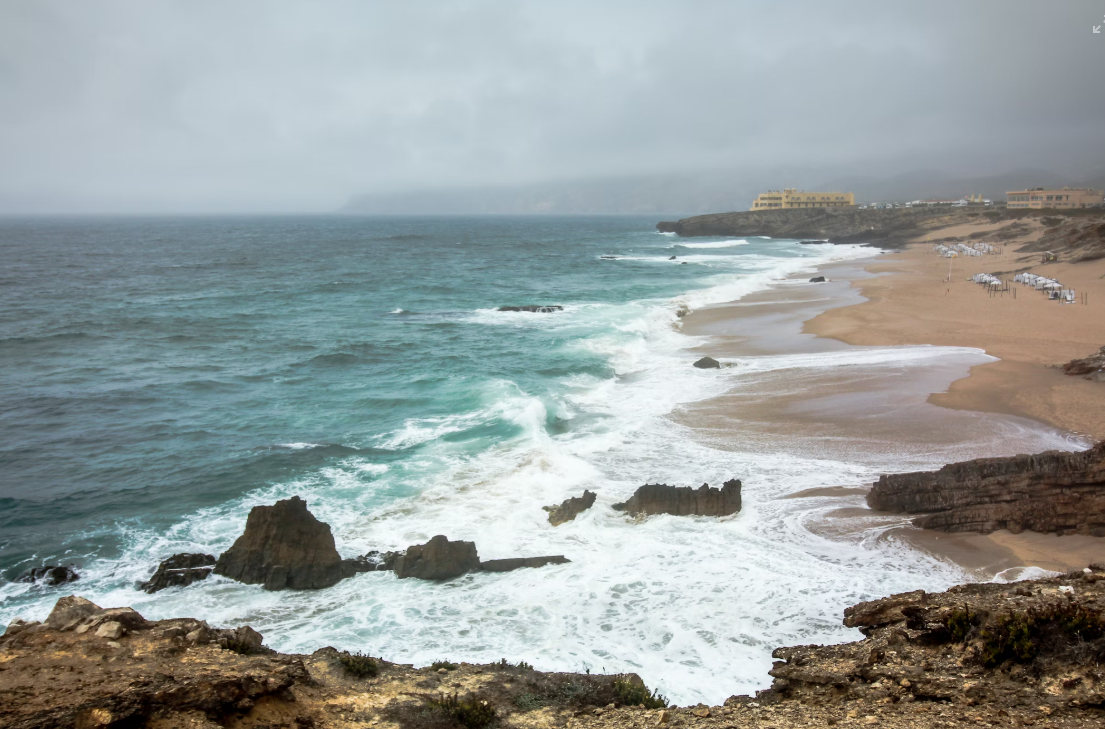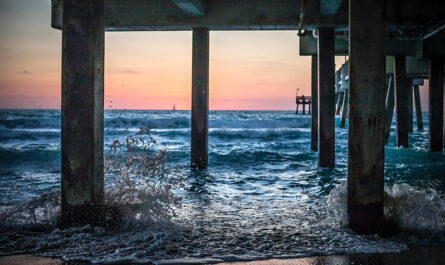Rising sea levels in the Atlantic represent one of the most pressing environmental challenges of our time. As global temperatures continue to climb due to human-induced climate change, the melting of glaciers and the thermal expansion of seawater are causing sea levels to rise at an unprecedented rate. This phenomenon poses a severe threat to coastal cities and island nations, endangering not only ecosystems and infrastructure but also the livelihoods and cultural heritage of millions of people.
In this article, we delve into the causes behind rising sea levels, examine their impacts on vulnerable regions, and discuss the strategies being adopted to mitigate these risks. By understanding the scope and severity of this threat, we can better appreciate the urgent need for global action to protect our coastal communities and preserve our natural heritage.
The Science Behind Rising Sea Levels
Climate Change and Global Warming
The primary driver behind rising sea levels is global warming. The increase in greenhouse gas emissions—mainly carbon dioxide and methane—from burning fossil fuels, deforestation, and industrial activities has led to a gradual warming of the planet. This warming affects the oceans in two significant ways:
- Melting Glaciers and Ice Sheets: The warming climate is causing glaciers and large ice sheets, such as those in Greenland and Antarctica, to melt at accelerating rates. The influx of freshwater from these melting ice masses directly contributes to higher sea levels.
- Thermal Expansion: As ocean water warms, it expands. This thermal expansion accounts for a substantial portion of sea-level rise. Even a small increase in temperature can lead to a significant increase in water volume over the vast expanse of the Atlantic Ocean.
Scientific Projections and Recent Data
Recent studies indicate that the Atlantic Ocean is experiencing an accelerated rate of sea-level rise. According to research published in leading scientific journals, certain regions along the Atlantic coast are particularly vulnerable due to a combination of factors such as land subsidence, ocean currents, and regional climate variations. For example, parts of the Eastern Seaboard of the United States and the low-lying islands in the Caribbean and along the Atlantic coast of Africa face rising risks.
Satellite data from agencies like NASA and NOAA have provided clear evidence of these trends. Measurements over the past few decades show an average sea-level rise of about 3.3 millimeters per year globally, with regional variations that can be much higher. In some urban coastal areas, this cumulative rise poses a dire threat to infrastructure and human habitation.
The Impact on Coastal Cities
Infrastructure and Urban Planning Challenges
Coastal cities are on the frontline of the battle against rising sea levels. Cities like New York, Miami, and Boston in the United States, as well as Lisbon in Portugal and various cities in West Africa, are experiencing more frequent flooding and storm surges. The consequences for infrastructure can be devastating:
- Flooding and Water Damage: Increased sea levels heighten the risk of flooding during high tides and storms. This can lead to extensive damage to roads, bridges, buildings, and public utilities.
- Erosion and Land Loss: Continuous exposure to rising waters accelerates coastal erosion. This not only reduces the land available for urban development but also undermines the structural integrity of existing buildings.
- Economic Disruption: Coastal cities are economic powerhouses that host major ports, financial districts, and tourism industries. Flooding and infrastructure damage can disrupt economic activities, leading to significant financial losses and reduced global competitiveness.
Social and Community Impacts
Beyond the physical damage to infrastructure, rising sea levels have profound social implications. Coastal communities often house vulnerable populations who may lack the resources to adapt or relocate:
- Displacement of Residents: In some cases, the threat of flooding has forced communities to abandon their homes, leading to climate refugees. Displacement can result in the loss of community ties, cultural heritage, and social networks.
- Public Health Risks: Flooding can lead to contamination of drinking water, spread of waterborne diseases, and heightened exposure to mold and other environmental hazards.
- Inequality and Social Justice: The impacts of rising sea levels are not distributed equally. Lower-income communities, often located in the most vulnerable areas, bear the brunt of the damage, exacerbating existing social and economic inequalities.
Case Study: Miami
Miami is one of the most vulnerable cities in the world to rising sea levels. With its low-lying geography and porous limestone foundation, the city is already experiencing “sunny day flooding” where high tides cause water to flood streets and submerge infrastructure. The local government has initiated multi-billion-dollar projects to upgrade drainage systems, build sea walls, and implement resilient urban planning strategies. However, these measures may only offer temporary relief if global warming trends continue unabated.
The Plight of Island Nations
Existential Threats to Small Island States
Island nations in the Atlantic and surrounding regions are among the most threatened by rising sea levels. Countries such as the Bahamas, Barbados, and parts of the Caribbean face the grim reality that their very existence is at stake:
- Loss of Land: As sea levels rise, small islands can shrink significantly or, in extreme cases, become completely submerged. This loss of land not only displaces communities but also erodes national identity and cultural heritage.
- Economic Vulnerability: Many island nations rely heavily on tourism and fishing—industries that are highly sensitive to environmental changes. Rising sea levels, coupled with increased storm intensity, can devastate these economic sectors, leaving communities without livelihoods.
- Environmental Degradation: Coastal and marine ecosystems, including coral reefs and mangroves, are severely impacted by higher water levels and warmer temperatures. These ecosystems are crucial for protecting shorelines and supporting biodiversity, and their loss can have cascading effects on local fisheries and tourism.
Adaptation and Resilience Efforts
Despite the daunting challenges, many island nations are taking proactive steps to adapt to rising sea levels. These efforts include:
- Infrastructure Upgrades: Building sea walls, improving drainage systems, and constructing elevated structures are common adaptation strategies. While these measures can delay the impacts, they are often costly and may only provide temporary protection.
- Ecosystem Restoration: Restoring natural barriers like mangroves and coral reefs can help buffer the effects of storm surges and erosion. These ecosystems also provide critical habitats for marine life, supporting both biodiversity and local fisheries.
- Policy and International Cooperation: Many island nations are at the forefront of international advocacy for climate change mitigation. They are actively involved in global forums, urging richer nations to take more decisive action on reducing greenhouse gas emissions and providing financial support for adaptation initiatives.
Case Study: The Bahamas
The Bahamas is a striking example of an island nation grappling with the realities of rising sea levels. With many of its islands barely above sea level, the country faces an existential threat. Government initiatives focus on creating climate-resilient infrastructure, promoting sustainable tourism, and restoring natural coastal defenses. International aid and collaboration with environmental organizations are also crucial to ensure that the Bahamas can withstand the challenges posed by climate change.
Economic Implications of Rising Sea Levels
The Financial Toll on Coastal Economies
The economic impact of rising sea levels extends beyond immediate infrastructure damage. The financial burden includes costs associated with disaster response, long-term reconstruction, and loss of economic productivity. Urban planners and economists are increasingly concerned about the strain on public budgets and the potential for widespread economic disruption in coastal regions.
- Increased Insurance Premiums: As the risk of flooding and property damage rises, insurance companies are forced to increase premiums or, in some cases, withdraw coverage from high-risk areas. This can lead to a cycle of economic vulnerability, where residents and businesses face exorbitant costs just to secure protection against natural disasters.
- Investment Shifts: Investors may become wary of putting capital into regions that are deemed too risky due to environmental threats. This can lead to a decline in property values and reduced investment in coastal development.
- Economic Displacement: Entire industries, such as tourism and fisheries, may experience long-term declines if the environmental conditions deteriorate. This not only affects local economies but can also have ripple effects on national and even global economic stability.
Policy Responses and Economic Strategies
Governments and local authorities are compelled to devise strategies to mitigate the economic risks posed by rising sea levels. These strategies often include:
- Infrastructure Investments: Allocating funds for resilient infrastructure projects is essential. This includes building sea walls, upgrading drainage systems, and investing in flood-proof construction.
- Economic Diversification: Encouraging economic diversification in coastal regions can help reduce reliance on vulnerable industries. By promoting alternative sectors such as technology, finance, and green energy, cities can create more stable and resilient economies.
- International Funding and Aid: Many countries, particularly smaller island nations, rely on international aid and funding to support their adaptation projects. Global initiatives, such as the Green Climate Fund, are designed to provide financial assistance to regions most affected by climate change.
Environmental and Social Impacts
The Loss of Biodiversity
Rising sea levels not only threaten human communities but also disrupt delicate ecosystems. Coastal and marine environments are particularly vulnerable:
- Coral Reefs and Marine Life: Warmer water temperatures and increased acidity can lead to coral bleaching and the collapse of reef ecosystems. Coral reefs are vital for supporting marine biodiversity, and their loss can have a cascading effect on fish populations and local fisheries.
- Wetland Degradation: Coastal wetlands, including mangroves and salt marshes, serve as natural buffers against storm surges and help filter pollutants. As these areas are submerged or eroded, the natural protection they provide diminishes, making coastal areas even more vulnerable to extreme weather events.
Social Disruption and Community Resilience
The human cost of rising sea levels is profound. Communities that have lived in coastal regions for generations face the daunting prospect of displacement and cultural erosion:
- Displacement and Migration: Forced relocation due to rising sea levels can lead to the loss of community ties and the disruption of social networks. Climate refugees not only struggle with the logistics of moving but also face challenges in rebuilding their lives in unfamiliar environments.
- Cultural Heritage: Coastal cities and island nations often have rich cultural traditions and historical landmarks that are at risk of disappearing. The loss of these cultural assets can have a lasting impact on national identity and collective memory.
- Health and Well-Being: The stress of living in high-risk areas, combined with the potential for environmental degradation and economic instability, can have adverse effects on mental and physical health. Ensuring access to healthcare and supportive services is critical for communities facing these challenges.
Mitigation and Adaptation Strategies
Engineering Solutions
Engineering innovations are at the forefront of efforts to combat rising sea levels. Coastal cities are investing in large-scale infrastructure projects to protect against flooding and erosion:
- Sea Walls and Barriers: Constructing robust sea walls and storm surge barriers can help protect urban areas from high tides and extreme weather events. These structures, however, must be designed to withstand the long-term impacts of climate change.
- Flood-Resistant Building Designs: Incorporating flood-resistant materials and design principles into new construction can reduce damage and facilitate quicker recovery after flooding events. Elevated buildings, waterproofing measures, and flexible urban planning are essential components of this approach.
- Restoration of Natural Defenses: In addition to hard engineering solutions, many regions are turning to nature-based solutions, such as restoring mangroves, wetlands, and coral reefs. These natural barriers provide sustainable and effective protection while also supporting biodiversity.
Policy and Community Initiatives
Addressing the challenge of rising sea levels requires a collaborative approach that spans policy, community action, and international cooperation:
- Government Policies: National and local governments must enact policies that promote sustainable development, enforce building codes, and incentivize the use of renewable energy. These policies are critical for reducing greenhouse gas emissions and mitigating future climate change.
- Community Engagement: Engaging local communities in adaptation efforts is crucial. Public awareness campaigns, community-based planning, and participatory decision-making processes ensure that those most affected by rising sea levels have a voice in shaping their future.
- International Collaboration: Rising sea levels are a global issue, and effective mitigation requires international cooperation. Countries can share best practices, fund research, and provide financial support to vulnerable regions through global initiatives and agreements.
Looking Ahead: The Future of Coastal Resilience
Emerging Technologies and Innovation
The future of coastal resilience lies in the integration of cutting-edge technology with traditional engineering practices. Emerging innovations, such as smart flood monitoring systems, AI-driven predictive models, and sustainable construction materials, offer new hope for protecting vulnerable areas. These technologies can enhance our ability to forecast risks, design adaptive infrastructure, and implement proactive measures that minimize damage and safeguard communities.
The Role of Global Advocacy
As awareness of rising sea levels grows, global advocacy is becoming increasingly vital. Environmental organizations, international bodies, and grassroots movements are calling for urgent action to address climate change and protect vulnerable regions. By raising public awareness and lobbying for policy changes, these groups can help drive the investments needed to build resilient coastal communities.
Economic Opportunities in Adaptation
While the threat of rising sea levels presents significant challenges, it also creates opportunities for innovation and economic growth. Investment in resilient infrastructure, sustainable tourism, and green technology can stimulate job creation and drive economic development. By viewing adaptation as an investment in the future, governments and businesses can turn a potential crisis into a catalyst for positive change.
Conclusion: A Call to Action
Rising sea levels in the Atlantic are not a distant threat—they are a pressing reality that demands immediate and sustained action. Coastal cities and island nations around the world are facing an existential challenge, one that will require a comprehensive strategy combining engineering, policy, community engagement, and international cooperation. The impacts on infrastructure, the economy, biodiversity, and human lives are profound, and the time to act is now.
As we look to the future, it is essential to recognize that protecting our coastal regions is not solely the responsibility of governments and large organizations. Every individual can play a role in mitigating climate change by supporting sustainable practices, reducing our carbon footprint, and advocating for policies that prioritize the health of our planet.
The journey towards coastal resilience is long and complex, but with the collective effort of communities, industry, and international partners, it is possible to safeguard our future. Whether it’s through innovative engineering solutions, enhanced policy measures, or grassroots initiatives, the goal is clear: to build a world where our coastal cities and island nations can thrive despite the challenges posed by rising sea levels.
In the end, rising sea levels are a stark reminder of our planet’s vulnerability—and our shared responsibility to protect it. Let this be a call to action for governments, businesses, and individuals alike to work together towards a sustainable and resilient future. The fate of our coastal regions, and indeed our global community, depends on the actions we take today.



